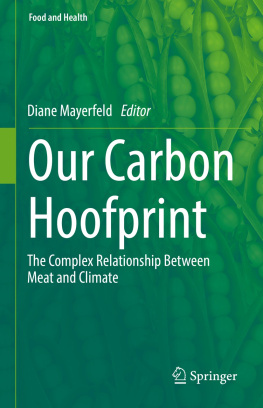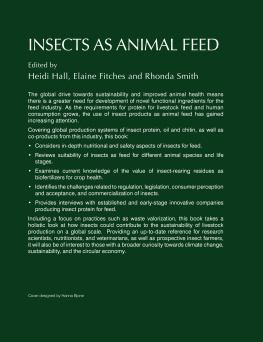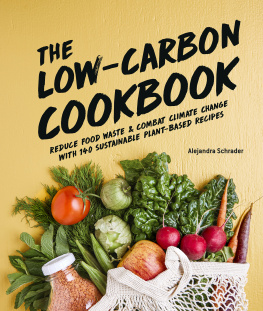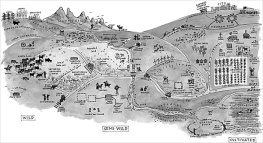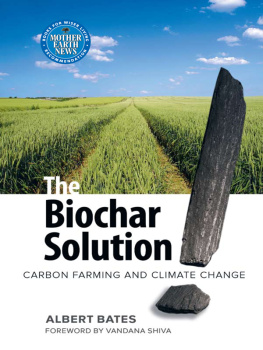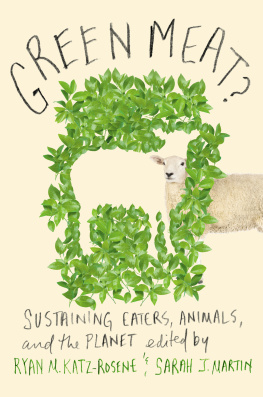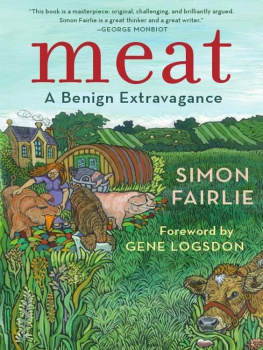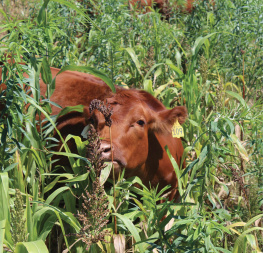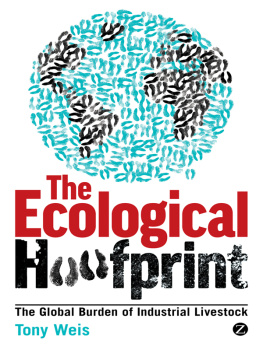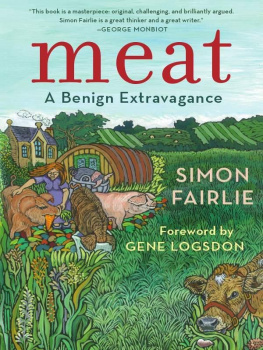Diane Mayerfeld - Our Carbon Hoofprint: The Complex Relationship Between Meat and Climate
Here you can read online Diane Mayerfeld - Our Carbon Hoofprint: The Complex Relationship Between Meat and Climate full text of the book (entire story) in english for free. Download pdf and epub, get meaning, cover and reviews about this ebook. year: 2023, publisher: Springer, genre: Politics. Description of the work, (preface) as well as reviews are available. Best literature library LitArk.com created for fans of good reading and offers a wide selection of genres:
Romance novel
Science fiction
Adventure
Detective
Science
History
Home and family
Prose
Art
Politics
Computer
Non-fiction
Religion
Business
Children
Humor
Choose a favorite category and find really read worthwhile books. Enjoy immersion in the world of imagination, feel the emotions of the characters or learn something new for yourself, make an fascinating discovery.
- Book:Our Carbon Hoofprint: The Complex Relationship Between Meat and Climate
- Author:
- Publisher:Springer
- Genre:
- Year:2023
- Rating:4 / 5
- Favourites:Add to favourites
- Your mark:
Our Carbon Hoofprint: The Complex Relationship Between Meat and Climate: summary, description and annotation
We offer to read an annotation, description, summary or preface (depends on what the author of the book "Our Carbon Hoofprint: The Complex Relationship Between Meat and Climate" wrote himself). If you haven't found the necessary information about the book — write in the comments, we will try to find it.
In the ongoing effort to combat global climate catastrophe, animal agriculture has long been a subject of contention. On the one hand, most agree that across the world increasing meat and dairy consumption are accelerating anthropogenic climate change. On the other hand, proponents of the livestock industry argue that modern advancements reduce greenhouse gas emissions from efficient livestock production to negligible quantities. Some even maintain that grass-based livestock production has a net positive impact on the environment, due to the carbon sequestration caused by grazing. Whom are we to believe?
This book shows us that the answer is not so clear-cut. Beginning with the implications of the UNs Livestocks Long Shadow report, it breaks down the blind spots and highlights the insights of the most prominent pro-meat arguments, as well as of the push for a global switch to vegetarianism. While advances in efficiency might reduce greenhouse gas emissions per unit of meat or milk produced, attendant decreases in cost can enable overconsumption and thus produce more waste. And while carbon sequestration is beneficial, it is not a reliable cure-all for the industry.
Due to the economics of farming, however, eliminating meat consumption may not even reduce emissions at all. The truth about livestock production is much more nuanced but, luckily, also far more holistic. The future of agricultural policy will have to take into consideration factors such as human health and economics, as well as climate. Eschewing ideology for empirical rigor, this book paves an actionable path forward for both consumers and producers, offering unique solutions for each livestock system and simple, everyday adjustments for the average omnivore.
Diane Mayerfeld: author's other books
Who wrote Our Carbon Hoofprint: The Complex Relationship Between Meat and Climate? Find out the surname, the name of the author of the book and a list of all author's works by series.

